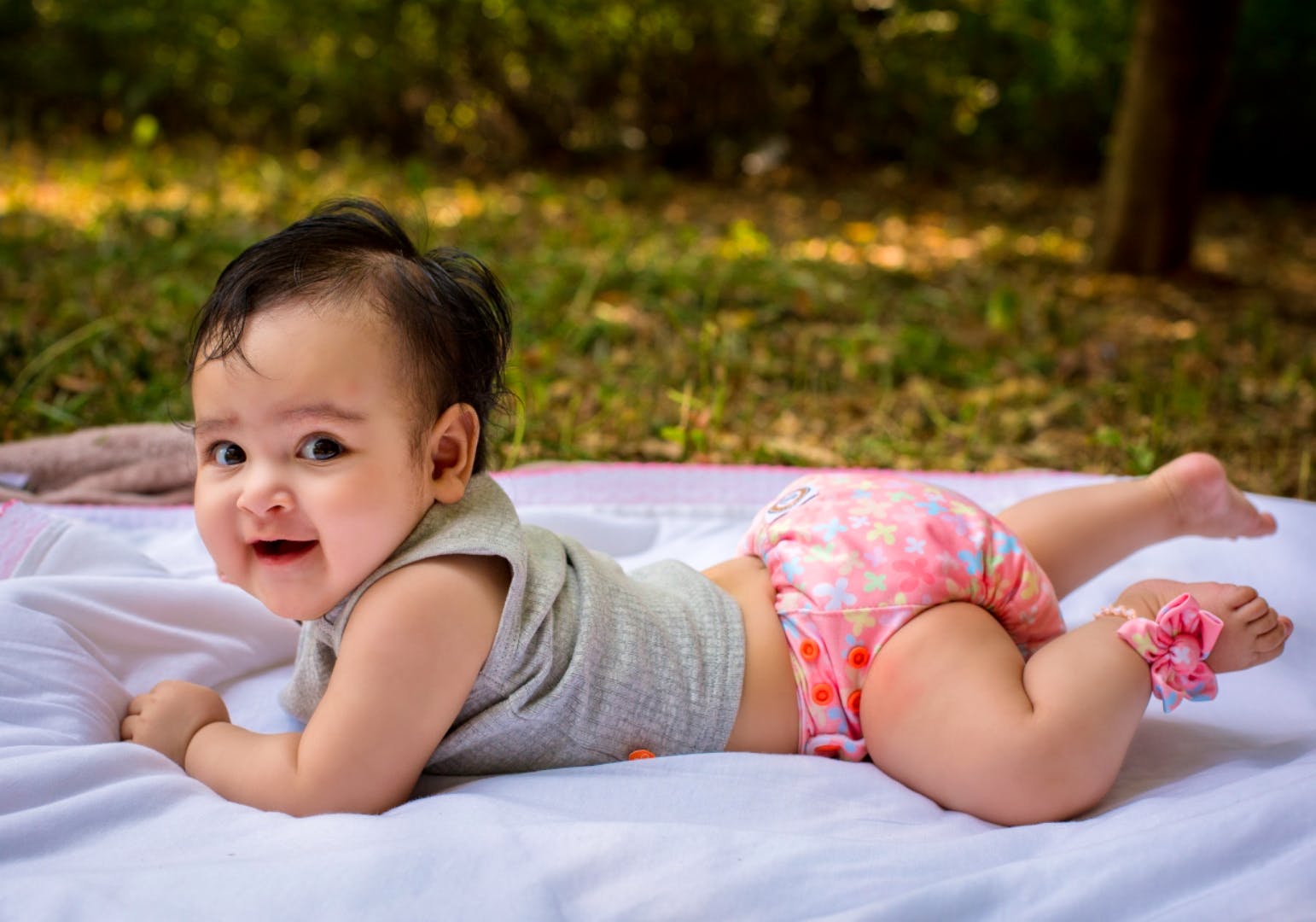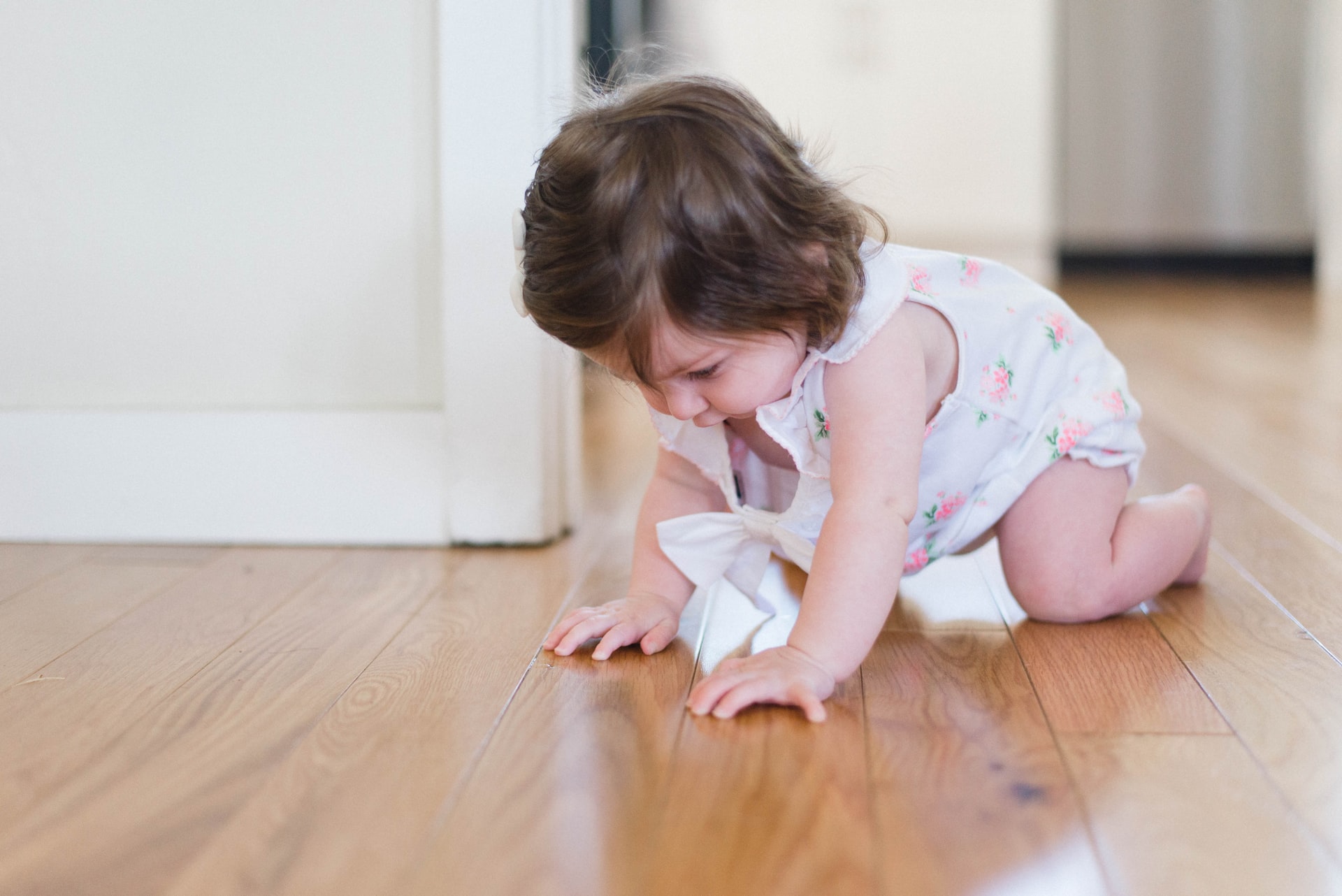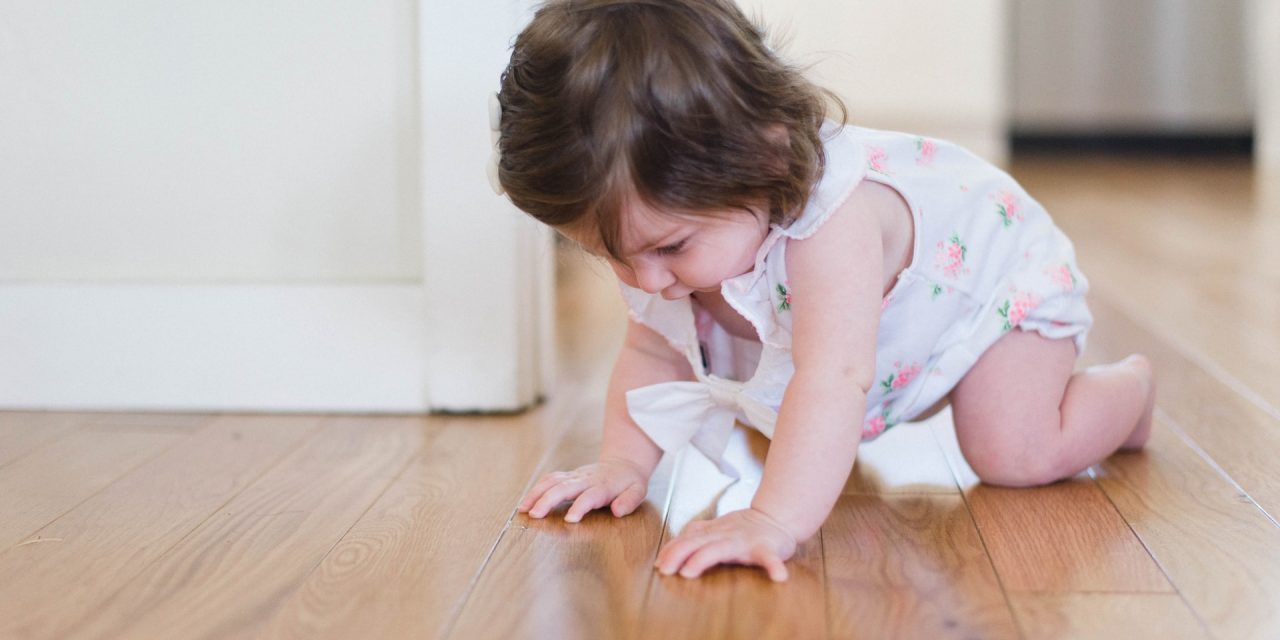Around six months after your baby is born, you will notice that your baby will start attempting to rock on all fours. This is the preceding moment of your child trying to crawl and is a major milestone for them! While this is an adorable and heartwarming sign of your child slowly growing up, it also means that you now have a fairly mobile baby on your hands. And that entails a lot of lifestyle changes to make sure that they stay safe. Read on to know just what it takes for keeping your crawling baby safe.
Benefits Of Crawling
Crawling is the first step to becoming a mobile individual – one who can get from point A to point B self-sufficiently and ably. It is one of the first activities that a baby does that propels them to use both sides of their brain. Along with that, it also establishes core developmental skills in a child. It helps in balance and coordination, and in strengthening and pushing the boundaries of their own physical capabilities. Crawling also establishes better learning patterns, visual tracking, and other motor skills.

Along with developing your child’s motor skills, crawling also helps in visual tracking and better learning patterns.
When a baby first begins to crawl, there are certain movements you’ll be able to notice. Some babies lie on their stomachs and wade their arms and feet forward making a swimming movement with their body. Others will lift the weight of their body and flop on their stomachs. These are all signs that your baby is ready to crawl.
Here are a few of ImmunifyMe’s favorite tips to keep in mind if you’re worried about keeping your crawling baby safe:
Give Them That Extra Push
You may start to notice your baby getting ready to crawl at around 5-6 months. At this point, make sure to go the extra mile in giving them that push. Reduce their time in your arms or in strollers/walkers. In addition, make sure they spend an ample amount of time on their tummies so that they gravitate towards the act of crawling.
Clean And Disinfect Your Floors
Crawling means that your babies will spend a good amount of their day on the floor. If your house flooring is entirely carpeted, make sure to clean and vacuum them regularly. Marble and tile floors should be consistently cleaned, mopped, and disinfected. This can help make sure that your baby doesn’t contract illnesses or is exposed to unclean surfaces.
Babyproof Your House
Babyproofing your house is a huge and integral step for keeping your crawling baby safe. Pad all sharp corners and door edges, and keep all open doors shut. Keep all open and random cords out of reach to ensure that kids don’t accidentally choke themselves on it. Make sure to remove all small objects from the way of the baby to prevent choking hazards. Remove all heavy and sharp objects in and around the floors leaving ample unhindered space on the floor. This is the best way for your baby to experiment with crawling!
No Open Switchboards
A mobile baby might be a happy baby, but it also means that no longer will they remain where you keep them. Babies love to explore and they will constantly try to reach for and touch different surfaces and objects. Make sure that you conceal and cover open switchboards and circuit boards. You need to do this to safeguard your baby from electrocution and other dangerous accidents. Also, invest in good bed guard rails and stair gates. This can help ensure they don’t topple off the bed or try crawling up and downstairs.
Model Their Behavior
Kids are social beings and sometimes setting an example for them would lead them to try to imitate you. While it may look silly, you should spend time on your tummy with your baby and make crawling motions that might catch their eye. Your babies admire you and seeing you try it would inherently encourage them to model their behavior after you.
Maintain Vigilance
Once your baby starts moving, they automatically become an accident magnet. Make sure to be thoroughly present and vigilant during this phase of your baby’s life. Install baby cameras or maintain a constant presence. This will help your child to freely explore their new milestone while not losing sight of safety.
Pet Control
If you have a pet, make sure to maintain even more vigilance on your crawling baby. Keep aside pet dishes, pet food, and toys to ensure a smooth, even space where your baby can crawl. Also, make sure that your kid is not let near animals that are non-vaccinated, sick, or injured.
Switch Up The Clothing
Try dressing your kids in soft cotton pants or kneepads which will enable them to crawl without friction. A softer, more comfortable fabric that is airy and allows movement will also aid your kid in their latest floor mission!

You need to babyproof your home and take relevant measures for keeping your crawling baby safe.
Conclusion
While this is one of the most significant periods of a child’s life, you don’t need to worry too much about how to make yourself and your home ready for a baby that crawls. With these simple tips in mind for keeping your crawling baby safe, you can ensure your baby enjoys their crawling experience. Simply encouraging them and removing obstacles in their path would lead to your child gaining developmental skills and honing motor activities. Along with this, make sure to be on track with your child’s vaccination and immunization. Just download the ImmunifyMe app to keep digitized records and get timely reminders for your child’s immunization.
FAQs On keeping Your Crawling Baby Safe
How Do I Protect My Baby’s Knees When Crawling?
You can protect your baby’s knees by putting a blanket down on hard surfaces where they are crawling. You can also make use of knee protectors that are designed especially for babies. These could be knee pads, leg warmers, or even pants with protective inserts.
What Are Some Things You Can Do To Childproof Your Home?
A few ways to childproof your home are:
- Secure your cupboards and drawers.
- Use outlet covers and make sure no open wires are left lying around.
- Avoid hanging cords on blinds or curtains.
- Keep all cleaning supplies out of reach.
- Beware of sharp corners.
- Lock your windows and gate your stairs.
Can My Baby Crawl On Hardwood Floors?
Yes, your baby can crawl on hardwood floors as long as it’s clean and clutter-free. Hardwood floors are also comparatively easier to clean and provide a stable environment for your child to crawl.
What Is A Safe Environment For A Child?
Babyproofing your home and removing any active threats to your child’s safety can help create a safe environment for a child. Make sure to keep your child away from open electrical sources, sharp objects, and other dangerous threats.






